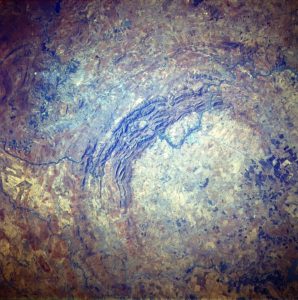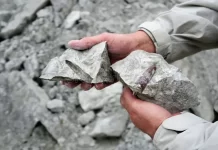
The Largest Verified Impact Crater on Earth
The Vredefort crater is the largest certified impact crater on Earth. In the present Free State Province of South Africa, what remains of it is more than 300 kilometers (190 mi) from when it was created.
It is named after the town of Vredefort, near its center. Although the crater itself has long been worn away, it is known as the Vredefort Dome or Vredefort impact structure that the remaining geological structures at its core are.
It is estimated that the crater is 2,023 billion years old (± 4 million years old), with an impact in the Paleoproterozoic period. It’s the Earth’s second oldest known crater.
In 2005, the Vredefort Dome was added to the list of UNESCO World Heritage sites for its geologic interest.
Where is the world’s oldest meteorite impact crater?
The Vredefort crater located in South Africa.
How big is the Vredefort crater?
The Vredefort Impact Crater is the largest asteroid impact site with an estimated initial diameter of 300 kilometers that still has visible evidence on Earth’s surface.
Who discovered the Vredefort crater?
Twenty years ago, the now professor of Western Earth Sciences first visited the core of the Vredefort impact crater in South Africa, discovering what he claimed to be some of the last remnants of a magma sea formed in a 300-kilometer-wide crater more than 2 billion years ago.
Vredefort crater Formation and structure
It is believed that the asteroid that struck Vredefort was one of the largest ever to hit Earth (at least since the Hadean Eon about four billion years ago), thought to be about 10–15 km in diameter (6.2–9.3 mi).
The main crater is measured to have a diameter of about 300 km (190 mi) but has been eroded. It would have been wider than the Sudbury Basin of 250 km (160 mi) and the Chicxulub crater of 180 km (110 mi). The resulting formation, the “Vredefort Dome,” consists of a small ring of 70 km (43 mi) in diameter of hills and is the remnants of a dome formed after the collision by the stone recovery below the impact site.
It is estimated that the age of the crater is 2 02 300 billion years (± 4 million years). It is the second-oldest known crater on Earth, slightly less than 300 million years younger than the Suavjärvi crater in Russia. In contrast, the effect of the Sudbury Basin is about 10% older (at 1,849 billion years).
The dome in the center of the crater was originally thought to have been created by a volcanic eruption, but in the mid-1990s, evidence showed that it was the site of a major bolide strike, as telltale shatter cones were found in the bed of the nearby Vaal River.
The crater site is one of the few craters on Earth that have multiple rings, though they are the most prominent in the solar system. Valhalla crater on Jupiter’s moon, Callisto is perhaps the most prominent example. There is also Earth’s Sun. The most multi-ring craters on Earth have been destroyed by geological processes, such as erosion and tectonic plates.
In 250 million years between 950 and 700 million years before the Vredefort impact, the effects warped Witwatersrand Basin.
The overlying lavas of Ventersdorp and Transvaal Supergroup were also skewed by the formation of the 300-km (190.000 mi) crater between 700 and 80 million years prior to the meteorite strike. The rocks are now partially clustered around the crater centre, with the youngest rocks of the Witwatersrand forming a half-circle of 25 miles. The Witwatersrand rocks contain multiple layers (e.g. quartzites and banded ironstones) of sediments that have been very strong, erosion prone, and form the prominent arc of hills in satellite picture above to the Northwest. Follow the rocks of the Witwatersrand, the lava of Ghaap Dolomites and the Pretoria Subgroup, which together form a 25-to-30-kilometer (16 to 19 mi) chain, follow at a distance of about 35 km from the middle and the Transvaal Subgroup, consisting of a small gang of the rocks of the Dolomites and of the Dolomites and Pretorias.
The order of the rocks is reversed from approximately halfway through the Pretoria subgroup of rocks around the crater centre. The Ghaap Dolomite band resurfaces from the middle at 60 km (37 mi), to the outer direction of where the crater rim used to be, followed by the Ventersdorp Lava arch, after which the Witwatersrand rocks are now a broken outcrop arc at 80-120 km (50 and 75 mi) from the core. The Johannesburg group is the most famous one because it was here that gold was discovered in 1886. It is thus possible that if it had not been for the Vredefort impact this gold would never have been discovered.










